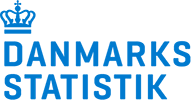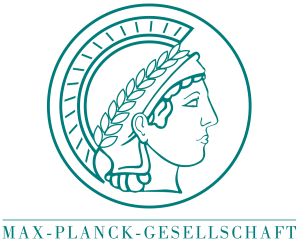Tapas, Talk, and Transformation: Inside the Barcelona consortium meeting
2024 October 22
Two weeks ago PREMIUM_EU held a fourth physical meeting in the glowing city of Barcelona. Although we are spread throughout nine countries and ten institutes, reconnecting the team was quicker than ever this time, as our work is crisscrossing more and more, now that we’ve arrived at the project’s halfway point.

Informal introductions and re-connection
A year-and-a-half into building a knowledge bride from migration to regional development, we have a firm enough foundation to start planning the policy machine that will deliver the research to the decision-makers.
Catching up with clinking glasses and tasty tapas was the optional and unofficial start of the programme, that many decided to join. A mix of languages and laughter blended well with Barcelona’s warm temperature and lively streets.
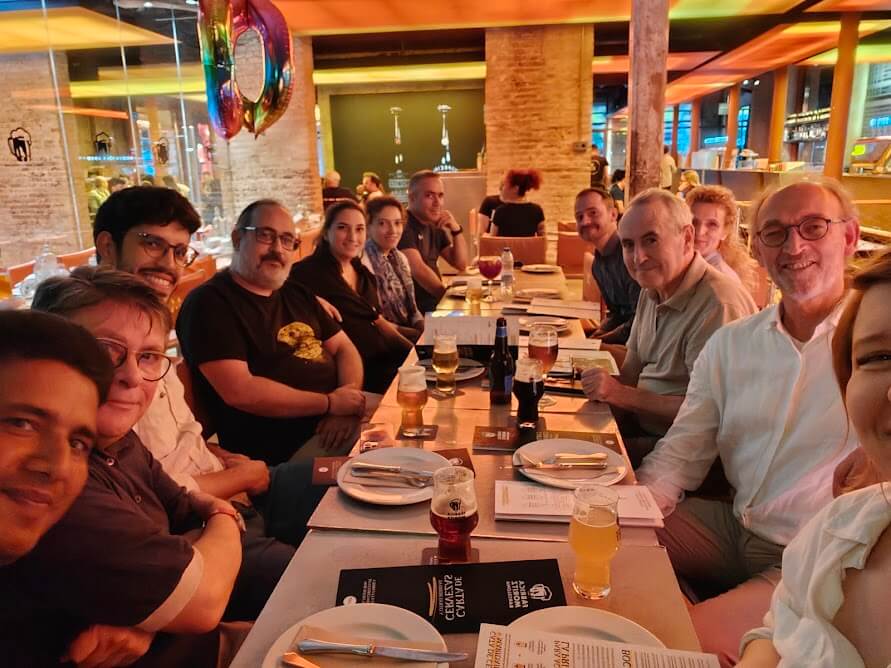
The first official programme day started early, in the bustling campus of The Centre for Demographic Studies at the Autonomous University of Barcelona. Our partners and hosts took great care of us, to make sure the first hybrid point of order went smoothly – our half-way evaluation meeting with external experts and EU project officer.
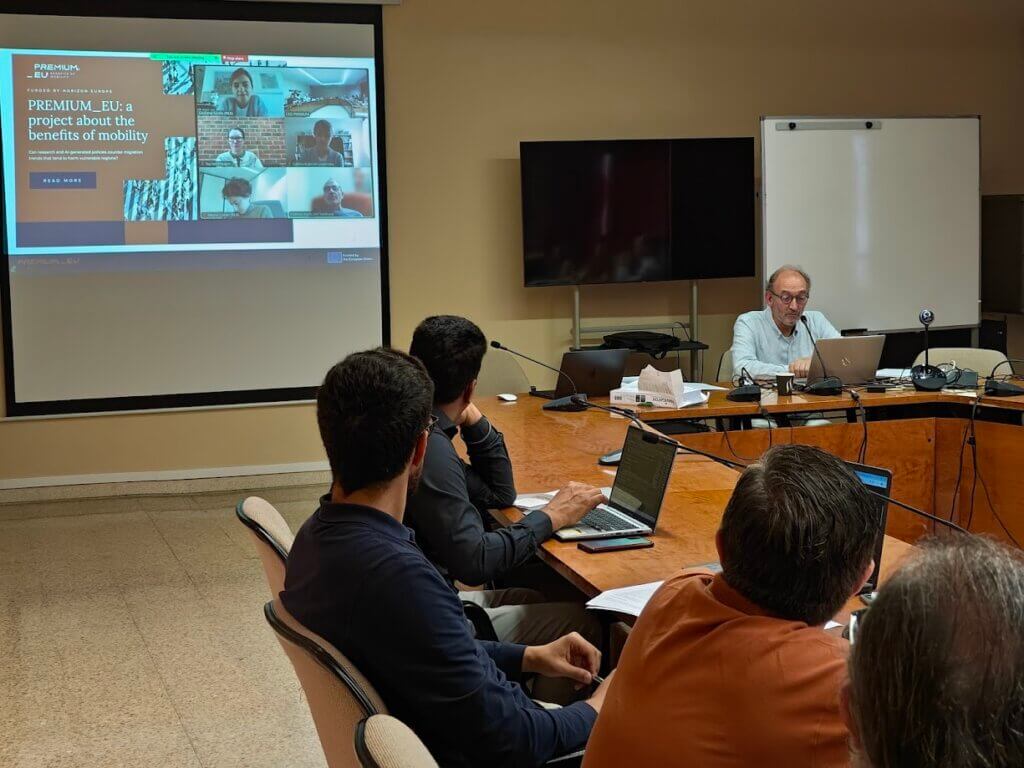
Half-way feedback from experts and EU officer
The experts and EU project officer were there to make sure PREMIUM_EU is on track with our deliverables, stakeholders and general timeline. Going through each work package thoroughly, there were seven presentations from our team, followed up with critical questions and feedback. Overall the atmosphere was friendly as the experts made sure to ad their suggestions and tips to improve the ongoing research. After a four hour session, lunch was welcomed enthusiastically by everyone, as well as the accompanying 25 degree October weather.

What Facebook can tell us about migration flows
Harnessing the post-lunch energy boost, the second work package kicked their result-presentation into gear. Modelling international migration flows by integrative multiple data sources, Maciej Danko and Jisu Kim from the The Max Planck Institute for Demographic Research took us through Facebook and Instagram questionnaires and how they gather as specific data as possible, providing a much fuller picture of migration motivations than previously possible. This is not without dilemmas though, as issues arise when comparing the social media definitions with the official UN migration terminology.
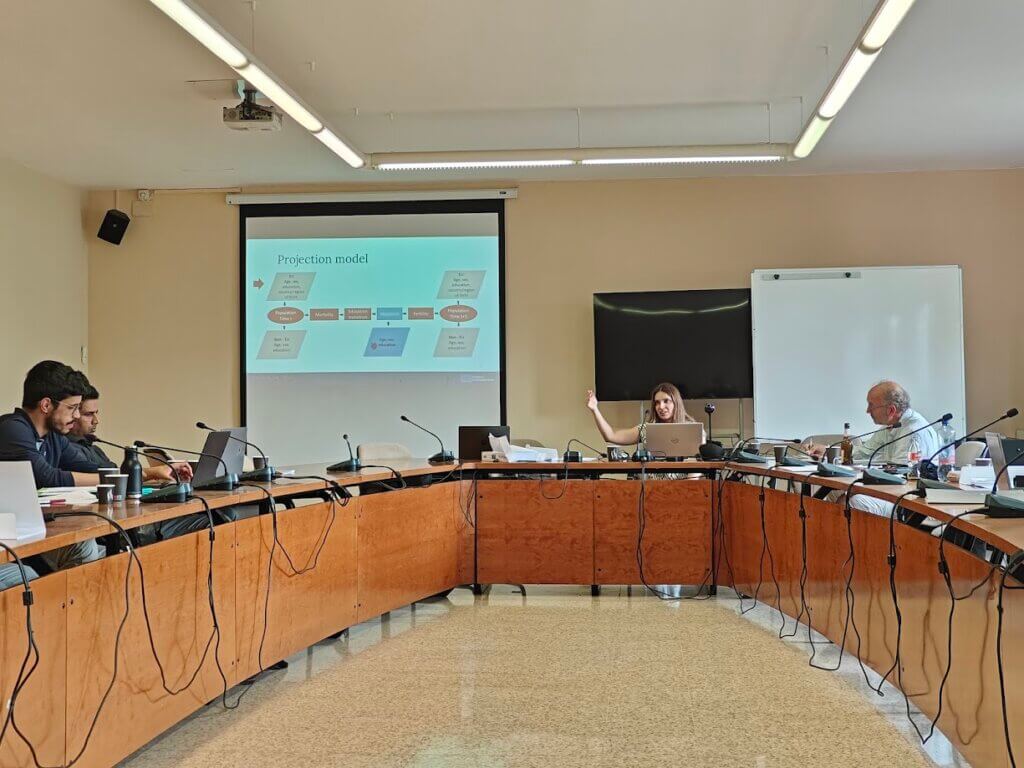
Next, a presentation about the multidimensional projection model was given by Dilek Yildiz from The International Institute for Applied Systems Analysis, that will help us get a hold of migration flows and how they react to different scenarios. Or said simply – a learning tool to better understand which parameters, for example fertility or mortality, that push people to move to or away from any given region. This will help us estimate out-migration, migration across borders and will be especially fine-tuned for EU member countries.
Regional development discussions: Live-ability vs. attraction
Moving from migration to regional development, we got an update on the Regional Development Module – the theory and empirical estimation of regional development in this project. This is where regional trends and characteristics come into place - “Is a region getting better or was it already doing well? Declining regions tend to be the ones that are already the worst off. That points to a wide national and sub-national equality that’s not being reversed” was a question posed by Becky Arnold from Netherlands Interdisciplinary Demographic Institute. Liveability vs. attraction strategies were discussed, as this work package identifies regions of concern. Surprisingly not all these regions are rural or remote and that makes it more difficult to understand the population stagnation.
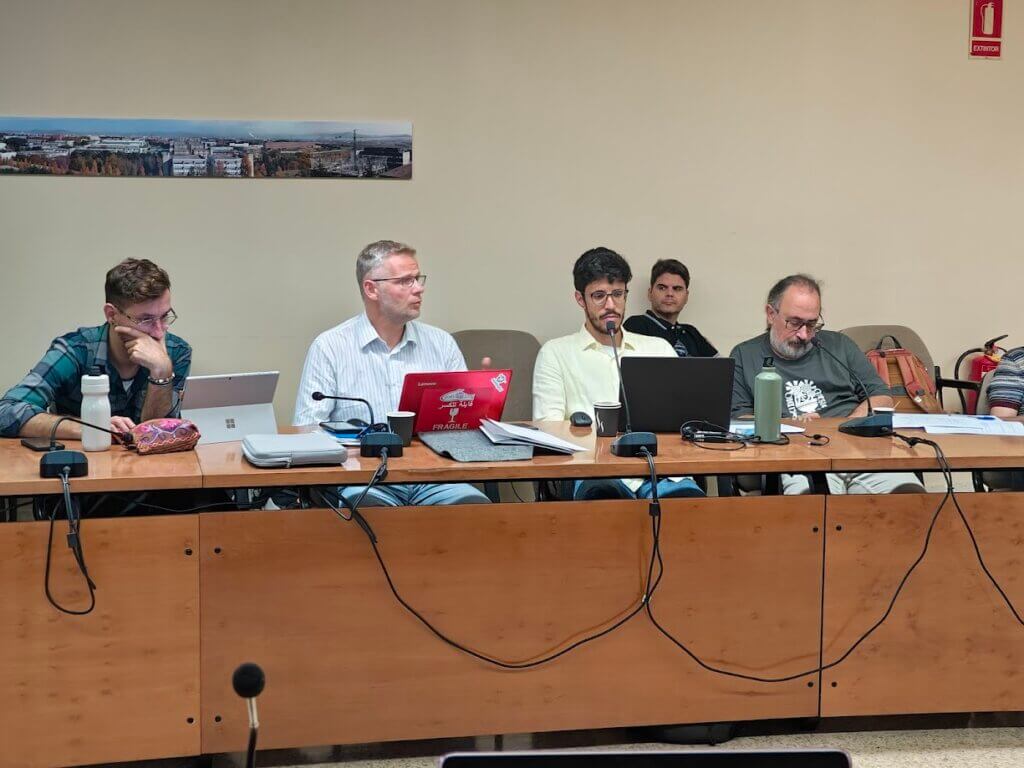
Expanding on these points, our host institute, specifically Jordi Bayona talked about the internal migration of foreign immigrants in Spanish rural area. More than half of the share of rural migrants in Spain are internal and return-migration is very low. These insights help us understand the decline in rural attractiveness, not just in Spain, but also other similar regions in Europe.
Concluding the first meeting-day, an update on communication and dissemination zoomed in our promotion strategies. Reaching local decision makers is crucial, not only for our research, but also because they are the target audience of our policy dashboard. For that reason, a communications workflow was introduced, along with a short presentation of presentation and writing tips. Finally progress on the Regional Policy Dashboard was outlined, including prototypes of user-journeys and a timeline for development, testing and launch.

What would make you move back to your home-country?
Day two of the consortium meeting started off with a focus on internal migration – people that move within their own countries. As almost everyone moves within their own countries borders at one point in their lives, and regional attractiveness has a huge sway over where people choose to go, this type of migration is crucial for PREMIUM_EU to understand, when trying to identify the benefits of migration.
“When someone moves, they aren't necessarily thinking, is the region well developed, but they might ask if there are good schools in the area, or easy transportation, or a hospital.”. Different kinds of people will decide to move based on different dimensions, and mapping these types, is what will link the regional development research to the migration research in this project.
What are the consequences of migration across specific borders? That was next on the agenda, as several team members took us into the different case-studies that PREMIUM_EU is focusing on. We got insights from the interviews with Polish migrants in Denmark and Spain and return migrants in Turkey.
As it turns out, priests are the best gatekeepers to getting in touch with Polish migrants in our case countries. They serve as community focal points and this learning lesson was relevant to several other partners wanting to interview Polish migrants in other countries.

“A lot of Ukrainian men who came to Poland before the invasion are quitting and not contributing to the economy in Poland because of the conscription to war”, said Michal Wanke from the University of Krakow, adding facts about the development of Ukrainian migration to the table.
“We wanted to make two prognoses in two different regions. The most interesting finding is that the migration registration system contains a lot because of the host countries, not the sending country”, concluded Hilal Arslan, one of our Turkish team members from Haceteppe University. She expanded our knowledge on the return-migration – what makes migrants move back to their home countries, or what keeps them where they are.

Policy-problem-solving and what defines a "vulnerable region"
After a brief lunch break, the afternoon programme brought policy to the forefront. First our Dutch team members from The Hanze University of Applied Sciences presented their plan for hosting policy labs in several partner countries – a crucial step in gathering the policy data we need when putting the Regional Policy Dashboard together. Policy makers will be invited to a session where they both give and take. PREMIUM_EU will give them key figures and insights about migration specific to their regions, and using this, the policy participants will take us into their policy-problem-solving-process, sharing how they would ideally respond to scenarios like depopulation and out-migration or a rapid influx of migrants.
The policy module was next in the progamme-line, and Timothy Heleniak from Nordregio laid out a grim but pivotal fact to kick the presentation off.
“Sweden hit a milestone last year. There were more deaths than births. The country is only growing currently because of migration.”
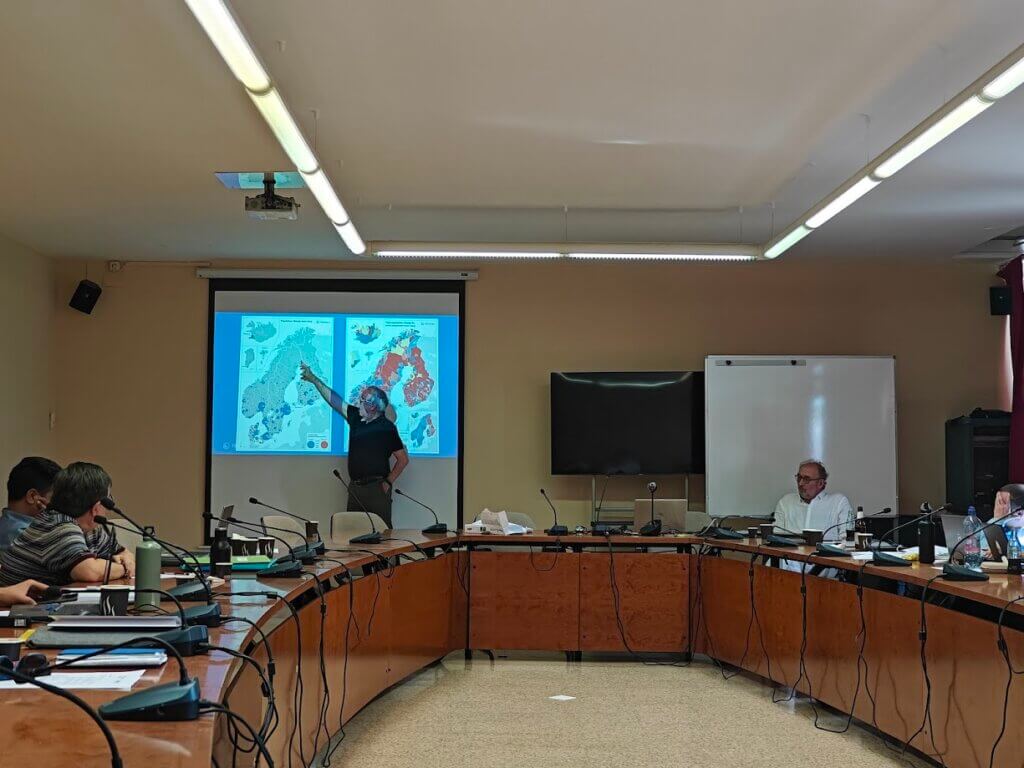
Challenging the notion of what makes a region “vulnerable”, Timothy continued to use Sweden as an example, using Luleå as an example. A region with the highest living standard in Sweden, it is considered the center of the green transition but Swedish people aren’t moving there. It’s people from abroad filling in the labour market gaps, in line with the trend in a country where 20% are foreign born. A region like Luleå in northern Sweden needs to attract 100.000 people by 2040. This is exactly why PREMIUM_EU is here, and ideally the final outcome – the Regional Policy Dashboard – will help policymakers standing on a similar steep cliff of migration-based challenges and opportunities.
Ending with a session about the structure of the Policy Dashboard was thus fitting. How do we model the relationship between mobility and regional development on a digital platform? What should the user profiles look like? Which regions don’t we have data on and what do we do about them? When do the policies work and how do we factor in timing?
It is exactly these tough problems that are hard to solve over email and fractured digital meetings. This is why we come together physically, twice per year in the same room to discuss and solve questions that require multiple perspectives. We got a lot closer to a collective understanding after the Barcelona programme. This will translate to more harmonized data for a better Regional Policy Dashboard, which in turn should help policymakers unveil the unseen benefits of migration.
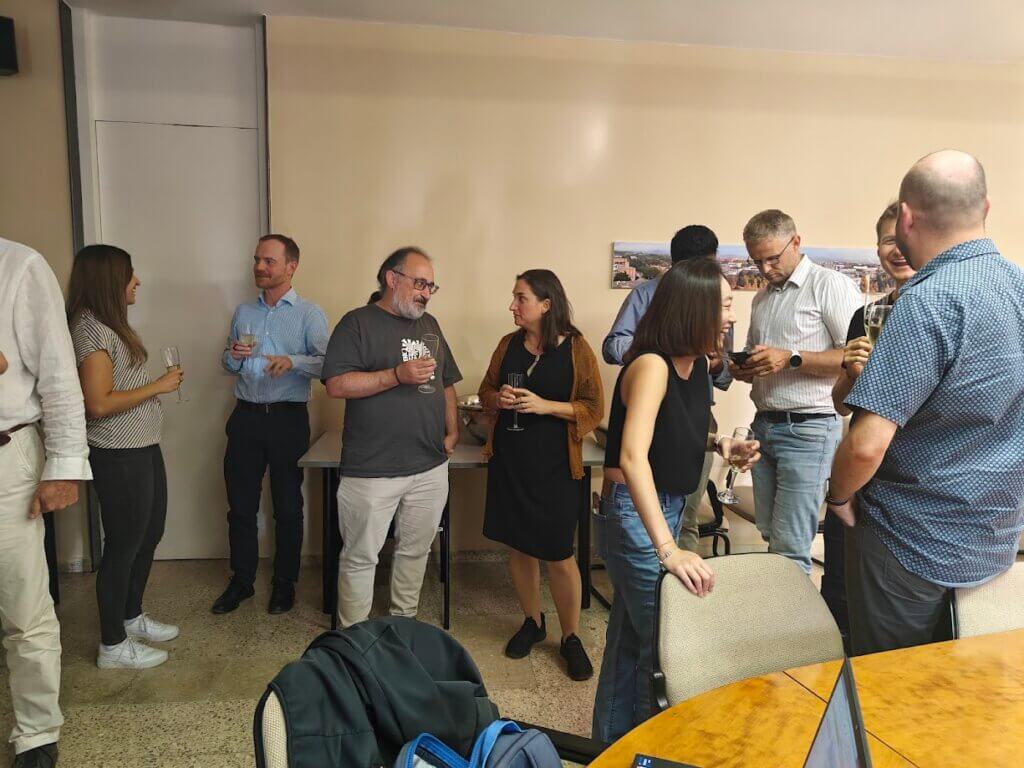
Birthday toasts and colourful dinner conversations
As the meeting concluded, it was clear this was just the beginning. The ideas sparked during these days will shape the next phase of the project, and the team left with a renewed sense of purpose. Our Spanish partners had already hosted us brilliantly, but had planned a surprise toast for a Turkish team member who had a birthday on the final programme day. The PREMIUM_EU partners enjoyed some casual catching up time at the campus, before heading to the final point on the programme – a dinner in the city.
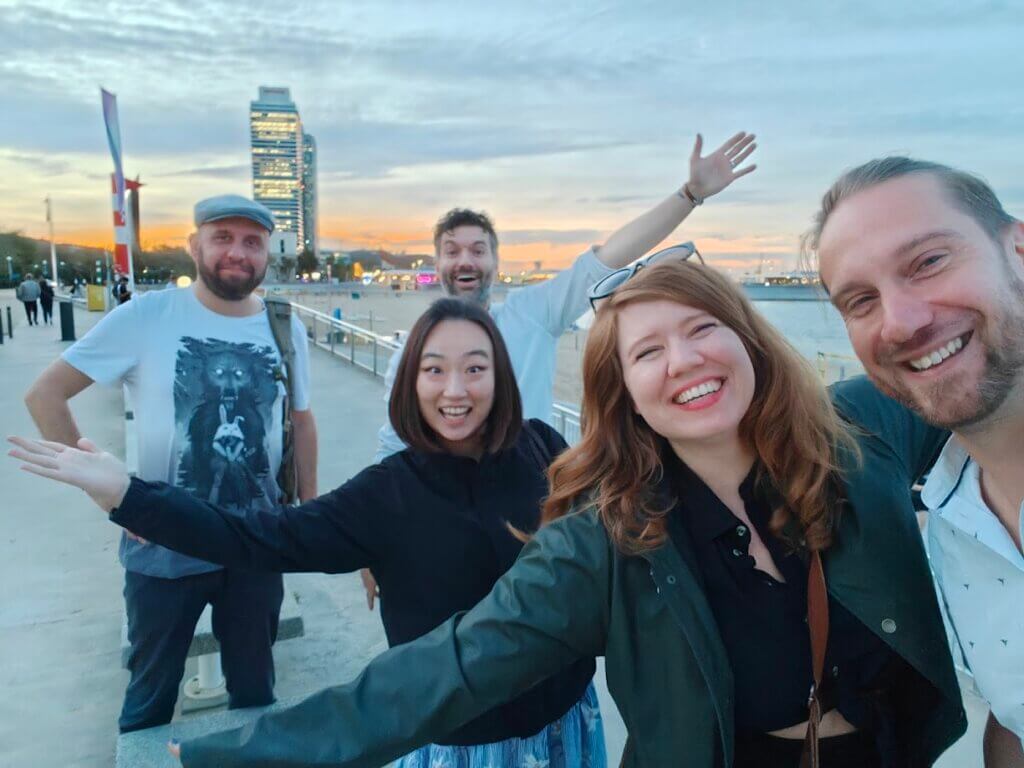
From mingling to friendships, the team made sure to keep the social bonds as strong as the formal project cooperation. As we celebrated the half-way point in the project, conversations was flowing back and forth across the tables, both research insights, the background stories that shaped our careers as well as internal jokes. In the true Spanish tradition, the dinner was as varied and colourful as the conversations, as the team got to enjoy both Barcelona’s beautiful coast and an impromptu drone show that lit up the sky.
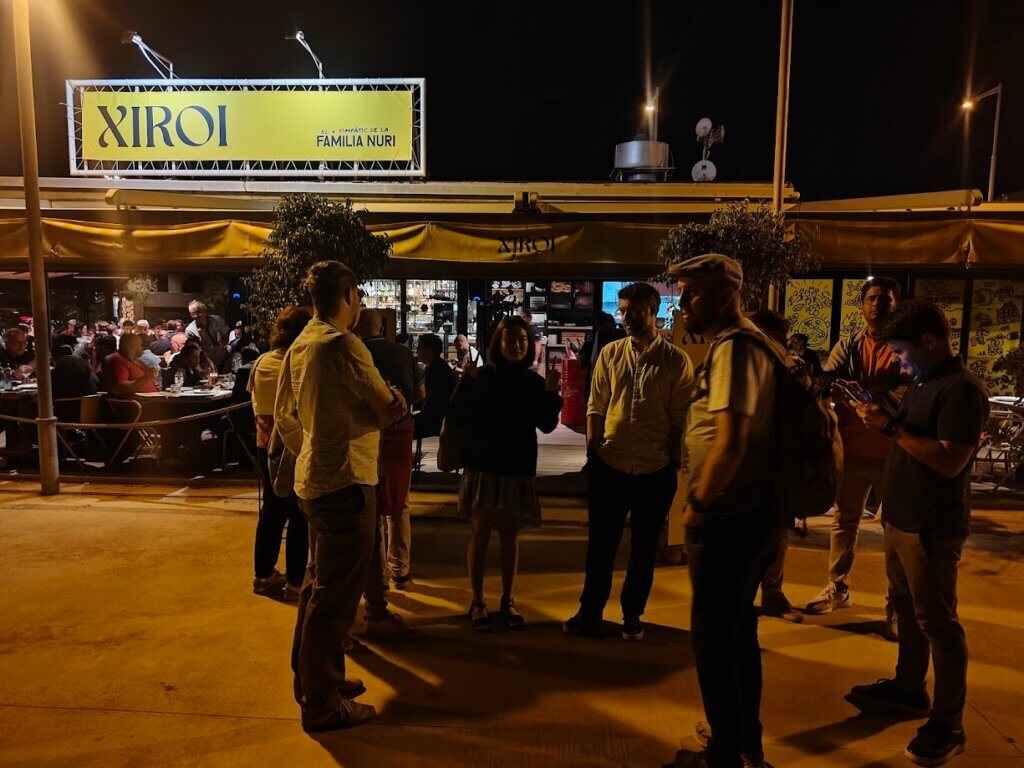
What's next?
The next PREMIUM_EU consortium meeting will happen in Ankara in April 2025, hosted by our Turkish team at Hacettepe University.
Want to know where this research will lead? Stay tuned as the team dives deeper into the complexities of migration and regional development, and be the first to see how these discussions translate into actionable results by subscribing to our newsletters and following our progress on Linkedin and website.

